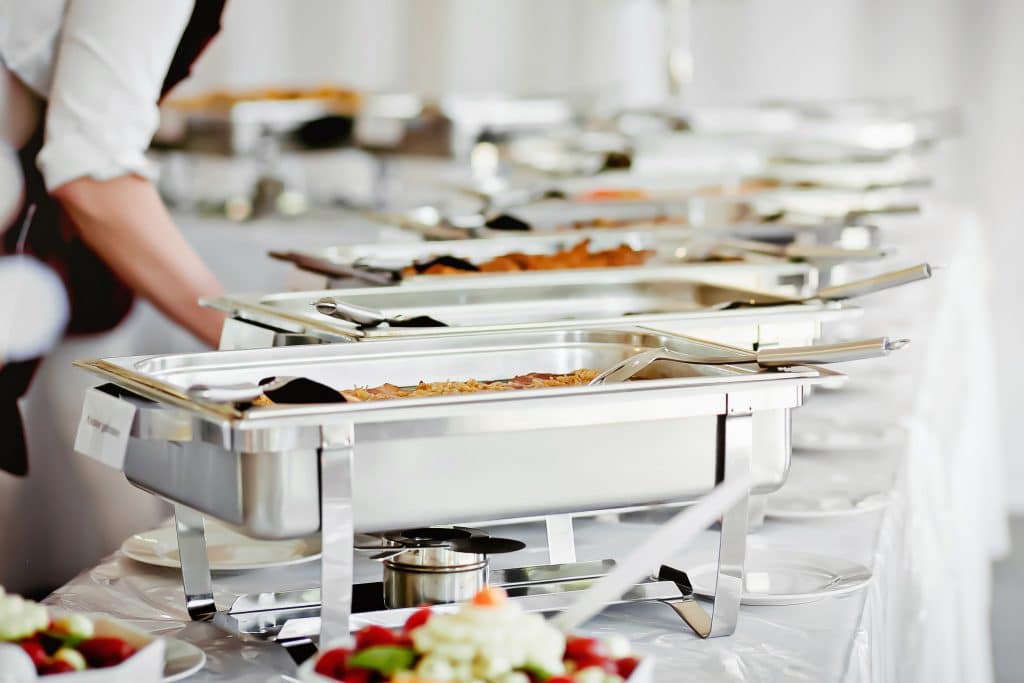
How Restaurants Can Get a Jump on Catering Jobs
Catering offers restauranteurs a "potential lucrative revenue stream," according to the National Restaurant Association.
For example, Scranton's Restaurant and Catering in Mississippi, as noted by the restaurant association, has used catering to keep the business profitable during downturns. Scranton's gets 35% of its business from catering.
From a strategic employee development viewpoint, catering provides opportunities for staff to take on additional responsibility and develop skills, such as learning new areas of food preparation or managing teams of employees. More seasoned and experienced employees means more efficient work overall, including at the restaurant. Catering off-site can also serve as marketing for the business. Offering quality food at an event might win over future customers.
Catering comprises 11% of the total food service industry, according to Restaurant Business, with a 5.6% compound annual growth rate through 2019. Whether working with consumers, which is 63% of the catering market, or businesses, another 37%, this is a significant opportunity.
But there are challenges to running a profitable catering sideline focused on off-site events, even when you own a restaurant and have a commercial kitchen, staff, and experience running a food business.
One of the biggest hurdles is managing event logistics.

Logistics scramble
Logistics are an important part of catering, as the blog Better Caterer notes. Food, drink, equipment, materials, and personnel all must show up in the right place at the right time. Then everything has to return, so it's available for the next catering job.
Simple things like a driver getting lost can throw off a detailed schedule. Employees who don't keep track of materials on-site can cause losses that may seem small, but add up to a significant cost.
Logistics involve more than carting food or ensuring cooks and servers appear when needed. Jobs will likely require some basic equipment, such as knives, pans and pots, mixing bowls, platters, serving utensils, and bus tubs.
The caterer may need to include dishes and tableware or arrange tables and chairs. Certain jobs might include more specialized equipment and tools, such as ice carving chisels, chocolate fountains, chafing dishes, and portable propane or electric burners. A restaurant would likely need to keep this equipment separate from day-to-day operating essentials, so they don't disturb the workflows and storage needs of running the main restaurant and handling in-house customer flow.
Managing restaurant catering operations
Catering staff typically employ checklists to ensure they have everything needed for a job before loading equipment into vehicles and transporting the supplies to events for unloading and setup.
For smaller events, a van or two can bring items directly from the restaurant to a location. However, many events require more complex arrangements. As events grow in size, so do the crowds and the numbers of tables, chairs, plates, tents, and food that would take up far too much room for a van.
With complexity comes uncertainty. If equipment doesn't arrive on time, staff might not be able to set up and serve. For example, if linens are late, staff can't start setting tables, even if they have all the dishes. If a caterer provides everything, however, they also have to transport everything. And the larger the event, the more staff will have to arrange and haul. They'll have to plan transportation — too-small vehicles may mean multiple trips, which cost time and money. Forgotten items mean time wasted to retrieve them. Unexpected last-minute changes, such as additional guests, can mean more trips.
This additional equipment, the tables and dishes and so on, need to reside somewhere between uses. That requires extra space that the restaurant may not have, as well as building access to easily load and unload vehicles.
Mobile go kits for restaurant catering
Creating a dedicated collection of everything that might be necessary for most catering events can help overcome these obstacles. Whatever staff could need is immediately available, saving time and reducing the chances of forgetting something. However, that can mean hauling everything, even items that aren't needed for a specific job, to every site — an inefficient process, especially when it comes to loading and unloading gear. Storing everything in a trailer or truck on-site could help, but many restaurants can't afford to sacrifice a parking space (if they have a parking lot) that dining customers might need.

A container from PODS can store all catering equipment and materials with room to keep all goods organized, so staff can quickly take what they need for each job. Sturdy, steel-framed, weather-resistant portable containers have ground-level design that enables easy and ramp-free loading.
The PODZILLA® patented level-lift system, designed to minimize shifting, loads the container onto or off of a PODS truck, scheduled to arrive at the right date and time thanks to PODS Business Solutions Specialists. The container can stay at one of more than 200 PODS secure Storage Centers, and be brought to the catering site, ready for staff arrival.
Once in place for the event, after items are off-loaded, the container becomes temporary storage for things like ice chests and serving racks, even space to hold bagged trash if necessary. The container could be returned to the restaurant for any cleaning or trash removal, and then filled with the catering tools and brought back to the Storage Center until next time.
Logistics is a major factor in the effectiveness and profitability of a catering business. By creating a container catering go kit, a restaurant can reduce error and unnecessary costs, and improve efficiency — and profits.
[maxbutton id="1"]
Comments
Leave a Comment
Your email address will not be published. Required fields are marked *
